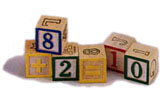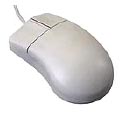Modularizing the Content
Divide the content of the course into manageable
units.
Establish one “screenful” as the basic
module of instruction.
Try to keep the student’s workload equal
from screen to screen.


Mastering a complex skill or absorbing a large mass of information can seem like an overwhelming effort.
You can make the task manageable if you
- divide complex skills and procedures into sequences of small steps
- divide masses of information into small meaningful units
With that in mind, follow these procedures to modularize your course:
- divide the entire course into units
- divide the units into chapters
- divide the chapters into screens
- divide the screens into parts with subheads

How does an airplane fly? Specifically, what is it about an airplane’s wings that enables them to keep the plane in the air?
The developer of a course in aerodynamics might include the following explanation within the course:
The Aerodynamics of Lift
- Importance of Forward Motion
- Plane’s engine or engines push it through the air.
- Air flows over and under the plane’s wings.
- Purpose of Wing Design
- Upper surface is longer than lower surface.
- Therefore, air must flow more rapidly over upper surface than lower surface.
- Air Pressure and Bernoulli’s Principle
- As the speed of a moving fluid increases, the pressure within the fluid decreases.
- The total energy in a steadily flowing fluid system is a constant along the flow path.
- Therefore . . .
- An increase in the fluid’s speed results in a decrease in its pressure.
- A decrease in the fluid’s speed results in an increase in its pressure.
- How Lift Is Achieved
- According to Bernoulli’s Principle, this difference in rate of flow creates a differential in pressure.
- Pressure on the top surface is lower than pressure on the bottom.
- Pressure on the bottom surface is greater than on the top.
- The higher pressure below the wing pushes it upward.
- The lower pressure above the wing offers little resistance.
- The upward motion produced by the pressure difference is called lift.
If the explanation of lift is going to be presented on three screens,
how would you group the information on those screens?
| OPTION A | OPTION B |
SCREEN 1
|
SCREEN 1
|

CLICK THE BETTER ANSWER.

WEB
CONTENT PRODUCTION
VIDEO
PRODUCTION
INTERACTIVE
INSTRUCTION
TEXTBOOKS
GENERAL
BOOKS